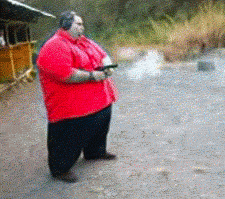The commercial factory ammunition in 6.5 Creedmoor tends to max out at about 147 grains, and many of the commercial offerings are far lighter than that.
Whereas the classical NATO battle rifles [7.62/308] offered payloads out to 175 and even 185 grains.
When reading about the 6.5 Creedmoor, I keep stumbling upon comments like the following [concerning a 143 grain round]:
Or comments like this [concerning a 129 grain round]:
So is the 6.5 Creedmoor too "perfect" of a round for a Battle Rifle?
Is it too fast, too aerodynamic, too clean, too surgical?
Conversely, is there anything to be gained from using a bigger slower sloppier round in a Battle Rifle?
Thanks for any advice!
Whereas the classical NATO battle rifles [7.62/308] offered payloads out to 175 and even 185 grains.
When reading about the 6.5 Creedmoor, I keep stumbling upon comments like the following [concerning a 143 grain round]:
MT: "I just shot a Muley Doe at about 250 yards... Hit her in the shoulder with one of these bullets and she limped off. I was able to finish her off after a short tracking job. When I skinned her out I found that the bullet never entered the chest cavity. It hit the front shoulder and and there it stayed..."
White Owl: "Shot mule deer at 30 yds with 3 shots thru lungs in Montana last week. The deer stood there like nothing happened..."
Chase: "...My hunting guide found the access 3 days later approx 400 yards away with a pencil hole through both shoulders..."
https://www.midwayusa.com/product/101693199/
Or comments like this [concerning a 129 grain round]:
Horatio NeAlda Gomez Rodriduiz Johnson: "My concern is expansion. I put 2 nice pin holes through a tide bottle filled with water with zero expansion.
https://www.midwayusa.com/product/1017716196/
So is the 6.5 Creedmoor too "perfect" of a round for a Battle Rifle?
Is it too fast, too aerodynamic, too clean, too surgical?
Conversely, is there anything to be gained from using a bigger slower sloppier round in a Battle Rifle?
Thanks for any advice!


